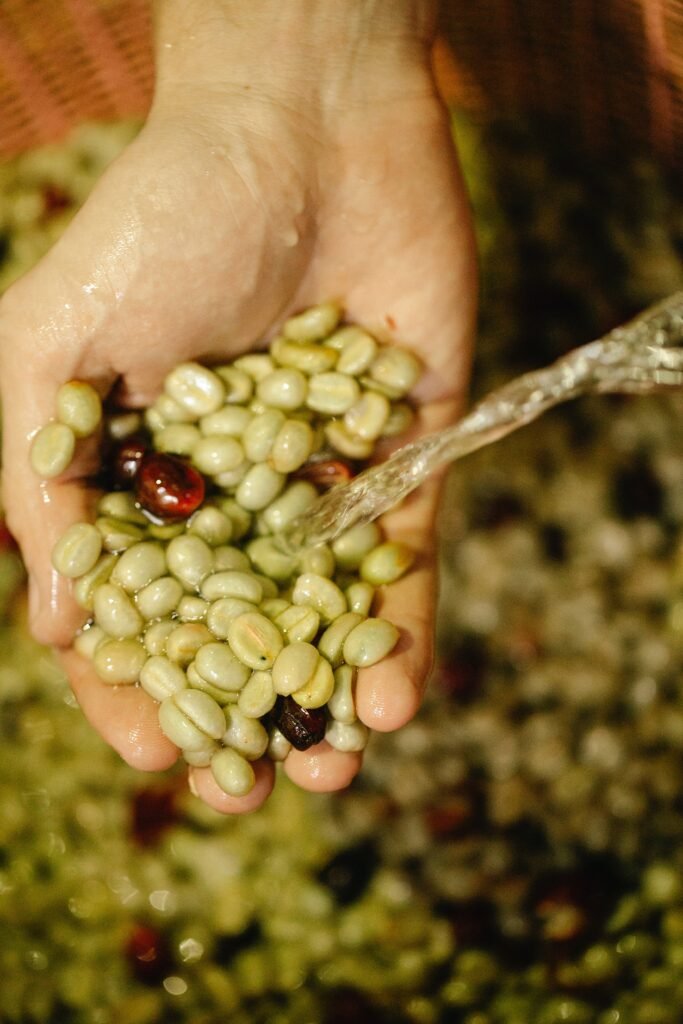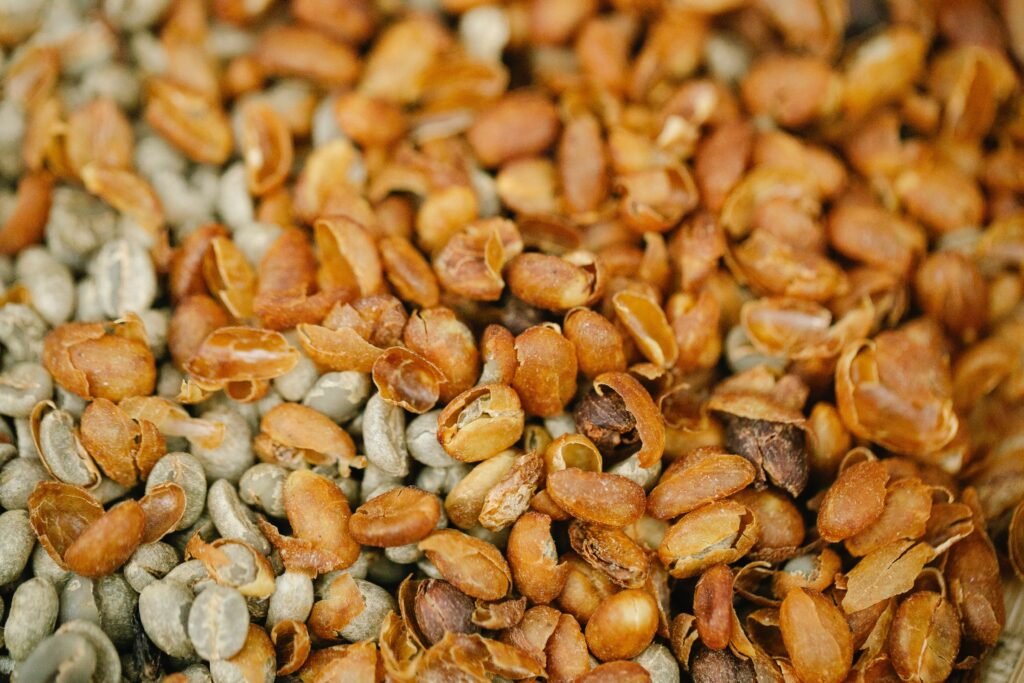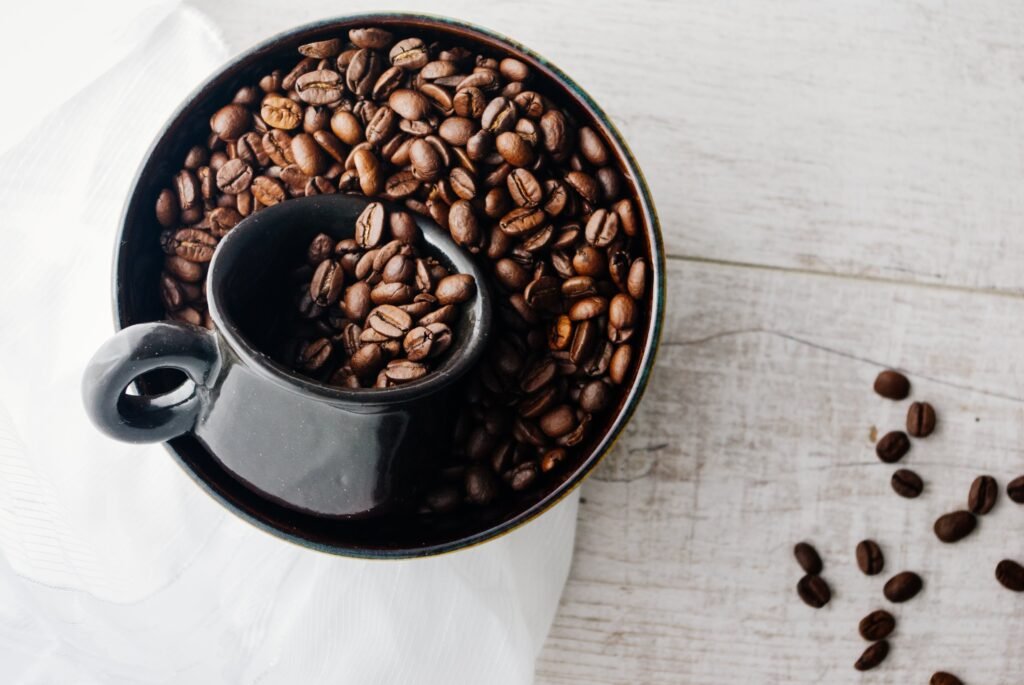
Embrace the warmth of your coffee mug, pondering the bean’s intricate journey to your cup. Coffee processing, a captivating procedure, significantly influences the taste and aroma. It’s beyond the beans – it’s a meticulously crafted journey turning a coffee cherry into your morning pick-me-up.
In the coffee realm, processing method crucially shapes your brew’s flavor and aroma profile. Wet vs dry coffee processing, with distinct steps and intricacies, imparts unique characteristics. Picture it as a dance routine; while the steps remain, style and performance can dramatically alter the outcome.
Understanding the Coffee Cherry: The Start of the Process
Before we plunge into the fascinating world of coffee processing, let’s understand the origin of our beloved beans – the coffee cherry. A coffee cherry is a radiant, plump fruit that houses the coffee beans within its fleshy interior, encapsulated by a parchment-like layer and a silverskin. The journey from cherry to coffee bean is a meticulous one, filled with careful selections and precise procedures.
The ripeness of the coffee cherry plays a vital part in this journey. Only the cherries at the peak of their ripeness are selected, ensuring the most optimal flavour profile in the subsequent stages. Just as an artist chooses the right canvas to start their masterpiece, the coffee processors select the ripest cherries to begin the coffee-making process.
Wet Coffee Processing: An In-depth Look
Wet coffee processing, also commonly known as washed coffee, is a technique that involves soaking the coffee cherries in water. This method separates the ripe, dense cherries from the unripe or overripe ones, as the latter float to the top. Following this, the pulp is removed, leaving the coffee beans encased in a mucilage-covered parchment.
The beans are then left to ferment in water-filled tanks, allowing the mucilage to break down naturally. This fermentation process, when monitored meticulously, can result in coffee that has a clean, bright, and fruity flavour profile. It’s like conducting a symphony, with every instrument (or in this case, bean) playing its part to perfection.
The Key Steps in Wet Coffee Processing

After the fermentation process is completed, the beans are thoroughly washed to remove any remaining mucilage. They are then left to dry until they reach the desired moisture content, usually between 10-12%. The coffee beans are raked continually during this drying period to ensure uniformity and to prevent mould formation.
Post drying, the beans are rested for a period in silos to allow the flavours to develop further. They are then hulled to remove the parchment layer, revealing the green coffee beans underneath. These beans are then sorted and graded, ready to be roasted and brewed into your favourite cup of coffee. It’s a labour of love, each step carried out with meticulous attention to detail, contributing to the final flavour profile of the beverage.
A Taste Profile: How Wet Processing Affects Coffee Flavour
Wet processed coffee is renowned for its crisp, vibrant, and nuanced taste profiles. The process of fermenting the beans in water allows for a more controlled breakdown of the mucilage, resulting in a cleaner and brighter flavour. It’s akin to playing a well-tuned piano, each note flawlessly crisp and clear.
The wet process also enhances the inherent qualities of the coffee bean, magnifying its intrinsic flavours. The resulting brew is bright, light-bodied, and often exhibits floral or fruity notes. It’s like taking a sip from a clear mountain stream, the water enriched with the subtle flavours of the surrounding flora.
Dry Coffee Processing: An Exploration
One of the oldest methods of coffee processing, dry processing or natural processing, is a method where coffee cherries are dried in the sun without removing the pulp. It involves spreading out the cherries in a thin layer on a drying bed or a patio, then regularly turned for uniform drying.
This process is time-consuming and requires careful attention to prevent the cherries from spoiling or moulding. However, the resulting coffee beans exhibit a robust, sweet, and complex flavour profile, much like a good mystery novel that keeps you guessing till the very end.
Unpacking the Steps in Dry Coffee Processing

Once the cherries are dry, with about 11-12% moisture content, they are stored in a cool place to rest. This resting period allows the flavours to develop and stabilize. After sufficient resting, the dried fruit is removed in a hulling machine, revealing the green coffee beans within.
These beans are then sorted and graded based on size and density. The dry processing method results in coffee beans with a broader range of flavours, often with a heavier body and a fruity or winey profile. It’s like an orchestra performing a symphony, the different instruments adding layers of complexity and depth to the performance.
The Flavour Impact: How Dry Processing Alters Coffee Taste
Dry processed coffee, with its robust and intense flavours, is the choice of many coffee connoisseurs. The drying of the entire cherry allows the coffee beans to absorb more of the natural sugars and flavours from the fruit, resulting in a sweet, full-bodied, exotic brew.
This process also imparts a winey or fruity quality to the coffee, often with a lingering aftertaste. Imagine indulging in a piece of dark chocolate with a rich red wine: the flavours are intense, complex, and linger on your palate, leaving you wanting for more.
Wet vs Dry: A Comparative View on Coffee Processing
When comparing the wet and dry methods of coffee processing, it’s akin to comparing an Impressionist painting to a Renaissance masterpiece. Each has its unique charm and allure, with distinct characteristics. Wet processing yields a coffee with a bright, clean, and floral taste profile, while dry processing produces a brew that is robust, full-bodied, and complex.
The choice between the two often boils down to personal preference. Some might prefer the fruity and winey notes of the dry processed coffee, while others might lean towards the crisp and clean flavours of the wet processed ones. It’s like choosing between a refreshing apple cider and a sophisticated Cabernet Sauvignon, each with their unique appeal.
How the Processing Method Influences Your Cup of Joe

The journey from cherry to coffee bean has a profound impact on your cup of Joe. The processing method can alter the flavour, aroma, body, and acidity of your coffee, creating a myriad of taste profiles. It’s like giving a musician different instruments; the melody remains the same, but the sound changes significantly.
From the bright and clean notes of a wet processed coffee to the robust and complex flavours of a dry processed brew, the choice of processing method can turn your coffee drinking into a unique sensory experience. It’s like listening to your favourite song on a vinyl record, each note carrying a depth and richness that adds to the overall experience.
Choosing Your Brew: Wet or Dry Processed Coffee?
Choosing between a wet or dry processed coffee can be a delightful dilemma for any coffee lover. Do you prefer the crisp, clean, and nuanced flavours of a wet processed coffee? Or do the complex, robust, and fruity notes of a dry processed coffee tickle your taste buds?
These choices allow you to explore and enjoy a range of flavour profiles, from bright and floral to bold and fruity. It’s like choosing between a romantic comedy and a thriller movie, each offering a different yet enjoyable experience.
Conclusion: Sipping the Knowledge on Coffee Processing
Understanding the process behind your cup of coffee can elevate your coffee-drinking experience, turning it from a routine into a sensory journey. From the moment the coffee cherry is picked to when the coffee is brewed, each step in the process is filled with precision and care, affecting the final taste profile of your brew.
Whether you prefer wet or dry processed coffee, knowledge is power. By understanding the process, you can appreciate the artistry behind your cup of Joe, savoring not just the taste, but also the journey that led to it. It’s like enjoying a good book, each chapter contributing to the beautiful finale. Cheers to that!